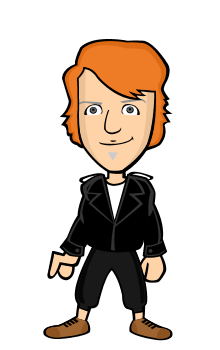To be paralyzed or otherwise disabled in America is to be largely invisible, at least in public life. Characters or actors with disabilities rarely show up on TV.The appearance of such a character is a cause for celebration, which underscores its novelty. There are barely any disabled newscasters, sportscasters, late night hosts, or other media personalities.I saw a person in a wheelchair working at my local CVS once. It was like bumping into Brad Pitt at Fantastic Sam’s. There are a couple of politicians who are disabled – Congresswoman Tammy Duckworth from Illinois, a double amputee, and wheelchair user Greg Abbott, the governor of Texas. They too are an extreme rarity. According to one report, only 21 prominent politicians have been disabled in the entire history of our great democracy. FDR was no trend setter.
You are doubly invisible, almost a phantom, if you are both disabled and poor. You are even invisible to other people with disabilities. I must confess, out of guilt, liberal or otherwise, that I seldom consider the plight of poor people with disabilities. This has a lot to do with my daily frame of reference. The people with disabilities I know, work with, read about, and write about are all above the poverty line. The disability organizations I encounter tend to focus on medical research and are looking for help from people who can afford to help. The “heroic” disability stories you see at the end of the local TV newscast tend to be about people with adequate means and a ton of social support. Never is the story: “Today we visit a slum apartment where a man with paralysis sits all day watching game shows and hasn’t left the house in fourteen years.”
We are talking about a heck of a lot of people here. A common statistic shows that 28-29% of people with disabilities outside of institutions live below the poverty line.* That’s closing in on one out of three. It’s hard to find exact figures, but let’s say that the total number of people with disabilities outside of institutions is around 35 million – that means that 29%, or a little over 10.2 million, are categorically poor. Another figure of note: of the 46 million people who receive income-based government assistance, 30%, or around 14 million, are disabled.*
*
Only anecdotally does this reality hit home with me. When I first took my driver’s test for hand controls – half of the cost of which the car company paid for – the DMV examiner was surprised that I even knew how to use them. A lot of people just wing it, but that wasn’t the worst of it, she said. An untold number of physically disabled drivers with no means are out there on the road using a golf club or baseball bat to hit the accelerator and brakes. One slip of that nine iron and they are whizzing through an intersection like the Tasmanian devil. They don’t even have disabled placards so that you can see them coming.
Not only are these people ignored in most disability discussions. They are often portrayed as freeloaders! Rand Paul, who once led the Presidential polls in Iowa before his campaign crashed and burned, was quoted as saying that at least 50% of the people receiving disability checks from Washington were frauds. His exact quote: “Over half of the people on disability are either anxious or their back hurts. Join the club. Who doesn’t get a little anxious for work every day?” (Notice that he blithely assumes these scalawags have a job.)
Who’s out there in this election year standing up for this invisible class? Apparently no one. At least Barak Obama made a point to mention the disabled in his standard stump speech. Now, even proud socialist Bernie Sanders is more focused on the income gap between the middle class and Wall Street, not the people with little or no income. (Minimum wage is one exception.)The situation doesn’t seem to be getting any better. In what is not exactly news to many of you, the Social Security Disability Insurance trust fund is about to go belly up and the current Congressional thinking is to cut benefits. Texas governor Greg Abbott, a paralytic, can’t bother to respond to a plea to raise caretakers’ pay to ten dollars an hour, even when ADAPT occupies his office in protest. The state of Louisiana, in financial freefall, is talking about eliminating all funds for disability services. Some legislators are more worried about the effect of budget cuts on the LSU football program. People with disabilities don’t riot. Southern football fanatics do.
You get the idea. It is desperation time for 12 to 15 million people just like you and me except for the fact they are poor. There are no doubt good people fighting these battles but they don’t make the news. Perhaps there is a powerful Washington disability lobby working behind the scenes to improve the situation, but given the fractured nature of the disability community, it seems unlikely. All NRA members have one thing in common – guns. Blind people have little in common with the SCI crowd. They operate in different spheres.
Unfortunately, all the arm-twisting in the world would probably do little to get the current dysfunctional government to do anything so bold as create a way out of poverty for people with disabilities. This is not a group who can buy elections.
The next time you go bananas when you can’t get through a department store aisle or have to sidestep a broken sidewalk, think of that old man driving his jalopy of a Dodge Dart with a fire poker. The last occasion that the disability community spoke as one voice was the run-up to the passage of the ADA. Can we do it again in the cause of one-third of the disability population? I wish I knew the answer, but then again, I just started asking the question.




